
Polybius And The Special Effects Arcade (Fiction)
A story of the game that played me as a kid.
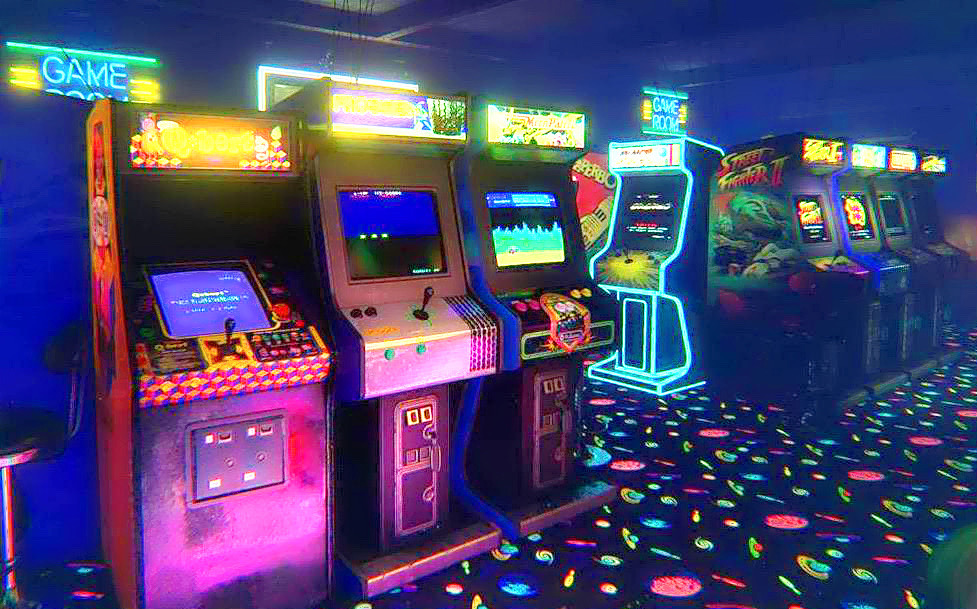

Author Note: All geographical locations in this story are real; characters, events, and the game Polybius are fictional. My account of the arcade’s front room is real; the back hallway and classic game section is fictional.
While I was browsing YouTube today, I got a recommended video about an arcade game called Polybius that I haven’t played since I was a kid. When I was in junior high school, it used to be my game of choice at the local arcade. Because it’s a somewhat obscure and not-well-documented arcade game, I want to contribute my own anecdote about it to the internet.
I fondly remember the Special Effects Arcade in Scotts Valley, CA. My sister and I lived and went to school in the San Lorenzo Valley area, so after school mom would often drive us up Mount Hermon Road for an hour or two of games.
Special Effects, in business from 1984 to 2004, was a pretty small place. It was the only arcade north of the beach town Santa Cruz and south of Los Gatos, which borders Silicon Valley. (I know, that’s the third valley in two paragraphs! Where I grew up, everything is a valley!)
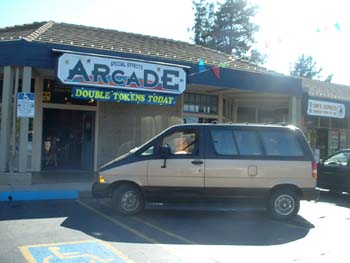
Picture a pretty standard shopping center nestled deep in the mountains. You park outside in the large lot and enter a small building through a double glass door. Inside, there’s a little island with a ticket counter and an attendant. Behind the ticket counter in the center of the room, there is a single Dance Dance Revolution machine with a line of tokens physically placed on the display bezel, representing each kid’s “spot in line” to play the machine. Around the edge of the room is a selection of arcade cabinets. One game that stuck out to me was Point Blank 2, a shooter game with physical guns attached to the cabinet by thick cables. To the right hand side of the arcade is a dinosaur themed token flipping game, where you pull back a spring to shoot a token to hit moving targets of varying ticket values.
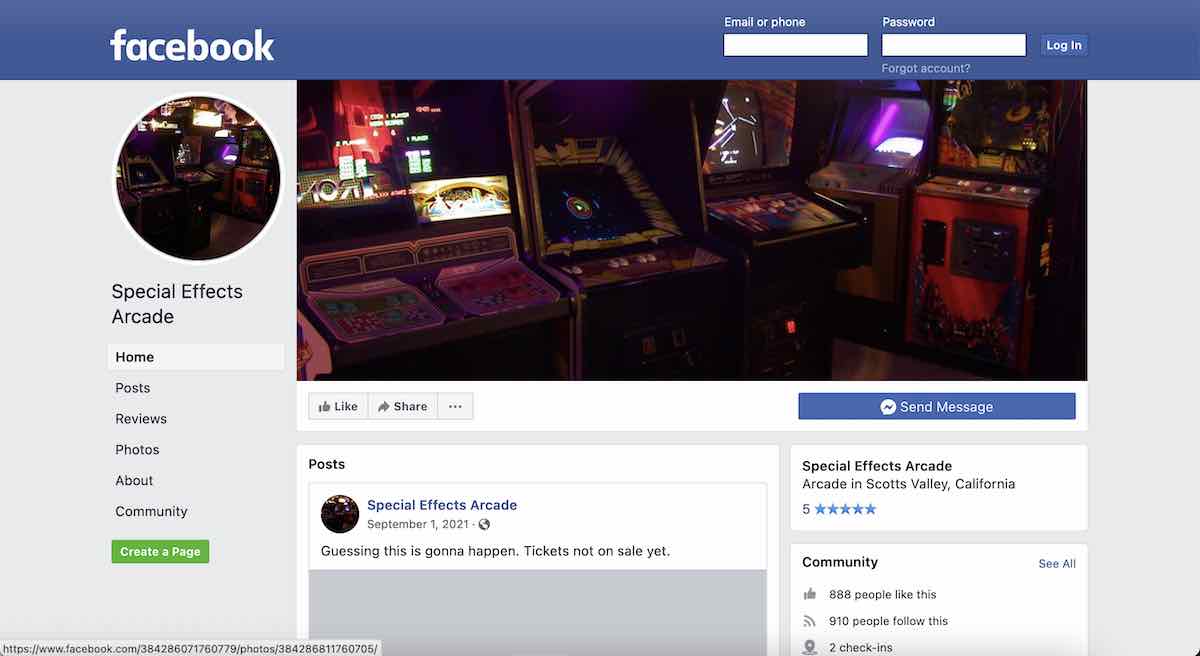
Towards the back of the arcade, through a doorway, there was a small hallway lined with select arcade classics including Marble Madness, Donkey Kong, Burger Time, Defender, and Polybius. One side of the hallway opened up directly into a small office space with a desk, where you could see the smartly dressed arcade owner doing paperwork and sometimes circuit board repairs. On the other side of the hallway was a simple A-Frame sign saying “No Customers Beyond This Point”, with a geometric design matching the arcade aesthetic of the main area’s walls and carpet.
The door to this back room was generally only open a few days of the week while the owner was around. The machines back there were in noticeably better condition than the ones in the main arcade area, so it seemed apparent that it was the owner’s personal collection. On rare occasions when kids were being too rough with the classic machines, the owner would get up from his desk to scold them and sometimes send them back out into the main arcade room.
The other arcade machines are very well documented on the internet, and they weren’t as memorable to me, so I want to focus on Polybius. At the top of the cabinet, in a big rounded teal font, was the word “POLYBIUS”. The sides of the cabinet had some generic geometric line designs, predominantly white on purple. Like the other classic cabinets, Polybius had room only for a single player.
The game’s title screen was very plain, simply mirroring the teal lettering on the cabinet along with some copyright info. When you inserted a quarter, a kind of would play. The main gameplay consisted of two game types plus a bonus round.
![]()
The first part of the game looked kind of like SimCity. The game would give you a selection between three procedurally generated cities, where you could see a preview of each one before you started the game. The preview would show the city’s roads, houses, shops, and even population density, so you could get a really good idea of it and choose the one that fit your play style the best. The higher the population density, the more difficult the game. But higher densities gave you a higher starting point bonus and allowed you to rack up points a fair bit more quickly. After you picked a city, you would choose a “drop spot” and one of several types of attractions, like an ice cream shop, a toy store, a donut shop, a pizza parlor, or even an arcade to build there. Your job was to manage the attraction and produce as many satisfied customers as possible. There was a management screen that showed the points you had on hand and let you select upgrades from a progression tree. In the lower right corner of the screen, there was a top-down view of your attraction and a stream of cartoon customers walking in and out of the front door; if you were managing it properly, the customers would walk out with yellow smiley faces where their heads were.

The second part of the game was much different. Every few minutes at random times during the management game, the message “DEFEND” would flash across the screen in big red lettering along with a warning bell sound, and you would have to defend your establishment (or sometimes for a “special round”, a different, themed establishment). The enemies were varied in type and difficulty, and ranged anywhere from a few customers that looked normal other than being highlighted in red, all the way up to a rare full military platoon complete with armored SUVs and helicopters. At your disposal was a laser-style weapon that you could aim using the joystick. When you shot a person enough times, they wouldn’t die, but rather they would take on the same “smiley face” head as the satisfied customers in the management game, then walk away from the establishment, walk around aimlessly, or sometimes even “convert to your side” and try to knock away weapons out of other enemies’ hands. Eventually if you were a good enough shot, all of the enemies would be smiley-face-ified and “CLEAR” would appear on the screen, then Polybius would kick you back out into the management game. If you had reached a point threshold during the shooter game, it would let you play a special bonus round first.
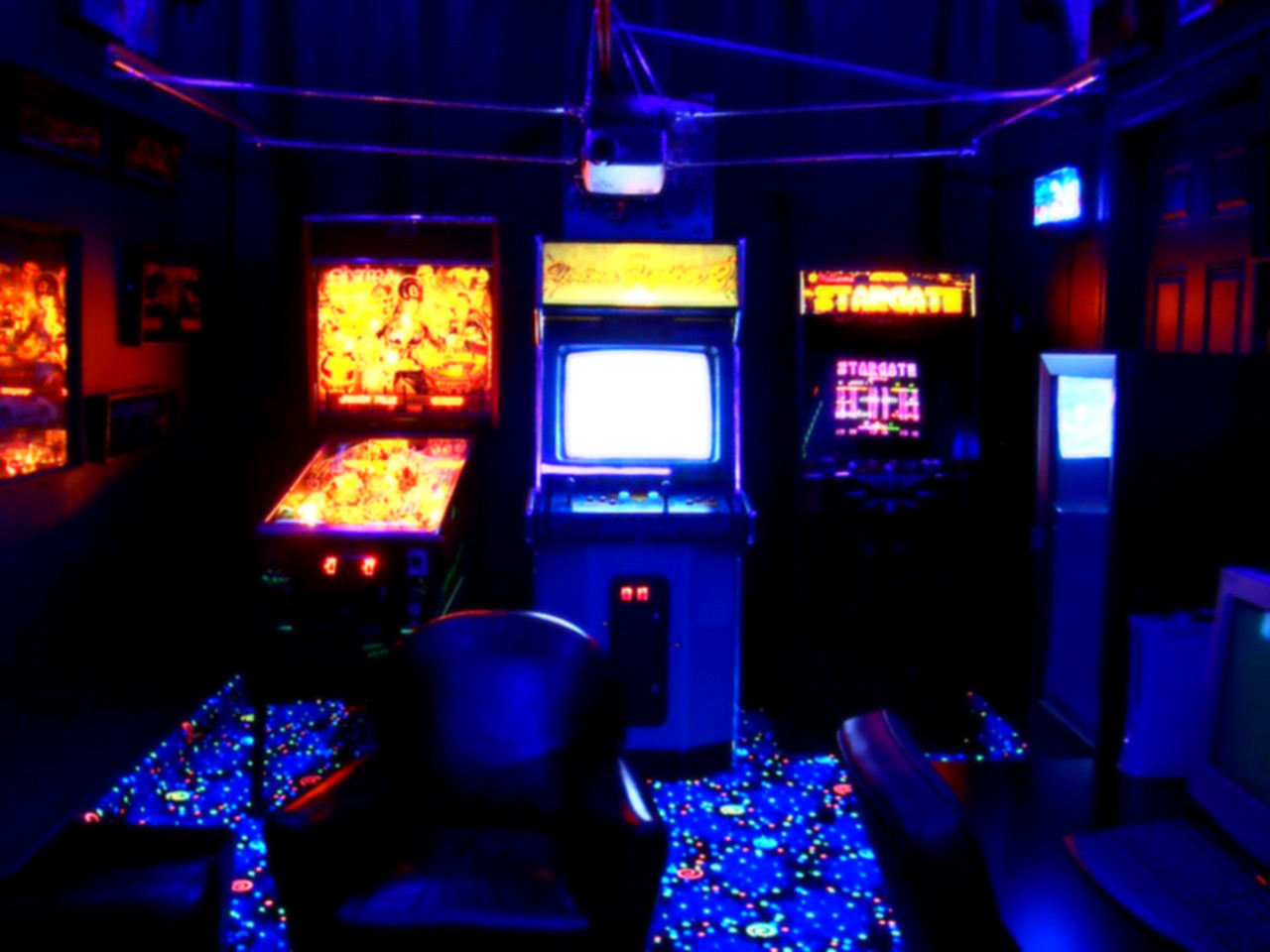
Because I visited the arcade a couple times a week, and I found Polybius’ gameplay compelling, it took me a month or two to get decent at the game. I started intuitively learning some of the strategies needed to get higher scores, including choosing the bigger cities even though they were harder to defend. I learned that your business would generally do better if you dropped it near the population centers of the city, that the most important upgrade tree was the defensive laser weapon rather than the enhancements to the establishment itself, and that letting customers leave unsatisfied would lead to more difficult “DEFEND” rounds.
Eventually I stopped playing Point Blank, Dance Dance Revolution, and the rest of the arcade machines. I had found a game that I was good at and felt satisfying to play. I tracked my score progression in the game’s high score board, and it became my preferred way to unwind after school. While playing Polybius, the stress of my classwork melted away.
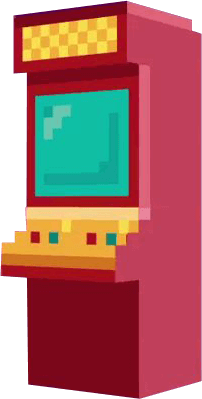
The first time the owner was unexpectedly out of office and the door to the classic game section was locked, I was livid. I had just come out of a history test, and all I could think about was playing Polybius to calm down. When I got to the arcade and realized the hall was closed, I got angry and started yelling at the attendant, then when that didn’t work I started pleading with him to open the back room. I even teared up and other people started looking at me, but it was worth it when the attendant opened up the back and turned just that machine on for me. I was addicted.

As I continued improving at the game, I started being able to get the bonus rounds more consistently. The bonus rounds were short at first, but they all followed the same format. On a plain black screen, some color-cycling text would appear, asking you a yes or no question with a classic arcade timer in the upper corner to keep you from dilly dallying. If you took too long or answered incorrectly, the entire screen would flash like those old TV cartoons, giving you a bit of a headache. If you answered correctly, you would be treated to a surprisingly intricate light show that lasted a considerable length of time. When I managed to get a light show, it would always remind me of the days when our family spent Fourth of July watching the fireworks outside the Scotts Valley Roller Rink. The Polybius light show had a kind of warm, comfy yet exciting feel to it. Like the feeling of opening up a new video game on Christmas, or playing gameboy in the back seat on the way to an amusement park, or unlocking the Special Zone in Super Mario World for the first time. It was cleverly coded so that each light show was different from one another with unique color cycles, patterns, and timing, so you could never get bored of watching it. If the game developers had taken just the light show part of Polybius and recorded a VHS of it, I probably would have watched it for hours or days.
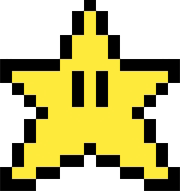
At first the questions were basic questions about the game - does this certain in-game upgrade cost X points? Yes or no. Is this type of enemy worth more points than that type of enemy? Yes or no. Eventually there were some basic questions about distance between towns, local populations, local businesses, geographical features, and local telecom networks. Kind of like survey questions.
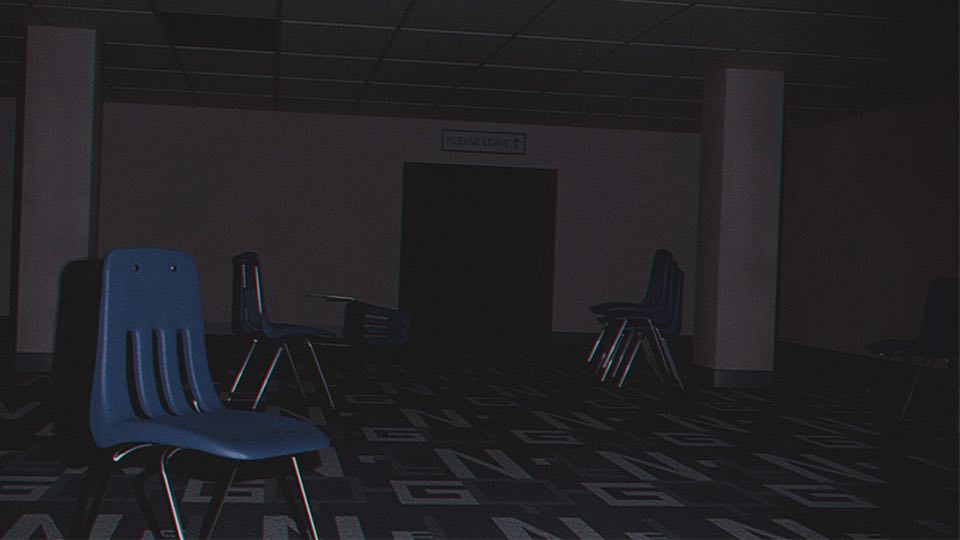
By this point I was asking mom practically every hour of the day to go back to the arcade. To try to get on her good side I started doing my chores without being asked, and doing extra favors around the house to try to get in her good graces. I even invented an “administrative school leave” holiday at one point to fool her into taking me to the arcade instead of to school. I printed out an official-looking flier using the school computer, “warning” parents about the upcoming holiday. If you’re reading this mom, sorry again about that.





Now if you know anything about playing retro video games too much, you’re probably familiar with the term “Tetris Effect”, and boy did I experience it strongly during the year or so I played Polybius. From Wikipedia:
The Tetris effect (also known as Tetris syndrome) occurs when people devote so much time and attention to an activity that it begins to pattern their thoughts, mental images, and dreams. It takes its name from the video game Tetris.
People who have played Tetris for a prolonged amount of time can find themselves thinking about ways different shapes in the real world can fit together, such as the boxes on a supermarket shelf or the buildings on a street. They may see colored images of pieces falling into place on an invisible layout at the edges of their visual fields or when they close their eyes. They may see such colored, moving images when they are falling asleep, a form of hypnagogic imagery.
Those experiencing the effect may feel they are unable to prevent the thoughts, images, or dreams from happening.
While I was at school, I started imagining blasting my school bullies with the Polybius laser gun and turning them into smiley face people. Whenever I went inside a business I would imagine what its tech tree would look like in Polybius, and how many points I might be able to get if it were my own business in-game. I even started dreaming about the Polybius light shows. Those were some of the best nights of sleep I’ve had in a long time. Sleep was a fleeting resource for me back then, but if I had played Polybius on a certain day, more often than not I would feel refreshed the next morning.
As I finished my schoolwork and the school year started coming to a close, all I could think about was how much I would be able to play Polybius over summer break with no schoolwork to get in the way. The day school ended that year, I was ecstatic. Mom made a habit of dropping me off at the arcade to run shopping errands all day in the Santa Cruz mountains, then pick me up before dinner. At the arcade, I met some other kids my age who liked to hang out in the back area and watch me play Polybius. We would talk about Polybius strategies and they would watch me play, though when I asked them if they wanted a turn, they would always tell me that they were just observers. I asked them on a few occasions where they went to school and what other stuff they enjoyed doing, but they told me the name of a school I didn’t recognize, and they said their other interests were stuff like human psychology and terrestrial economics, which I kept telling them I didn’t know anything about, even though they always wanted to chat about it. One day I forgot my money at home, but one of my new friends was able to put in a secret cheat code on the cabinet to get it to give me a credit. I didn’t realize until pickup time that I’d become good enough at the game to play on that one credit all day.
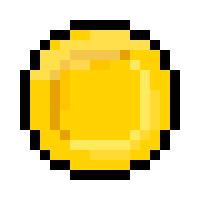
Another interesting thing about the game’s bonus round was that it would never ask you the same question twice. It had a seemingly endless list programmed into it, and the further you got into the game, the more complex and diverse the questions would become. If you got far enough, the yes/no prompt would change into a free text input. You could reply with a whole word or even a sentence by selecting letters in a vertical menu, similar to how you would input your initials into a high score table on other machines.
I started recognizing a few of the cities it gave me at the initial selection, so I could tell that the developers included some pet cities in addition to the random looking ones. San Francisco was easy to recognize, on a squarish peninsula with its two main bridges and the ocean to the west. I also recognized Monterey, with its distinctively shaped Monterey Bay. Both cities were represented faithfully in the SimCity-esque graphics style.
After another month or so, the arcade management replaced the other old arcade machines in the hallway with more copies of Polybius. My guess is that it was because Polybius was much better than the other games back there, so nobody really played the others. They changed out the little A-frame sign at the end of the hallway so that instead of saying “no customers beyond this point”, it just said “POLYBIUS”. The hallway’s wall was painted over with a large “POLYBIUS” logo, and day after day the wall took on more designs from the game. I really wanted to meet the muralist and get an autograph. The back hall had developed a cozy feeling, like you could comfortably spend hours and hours there.
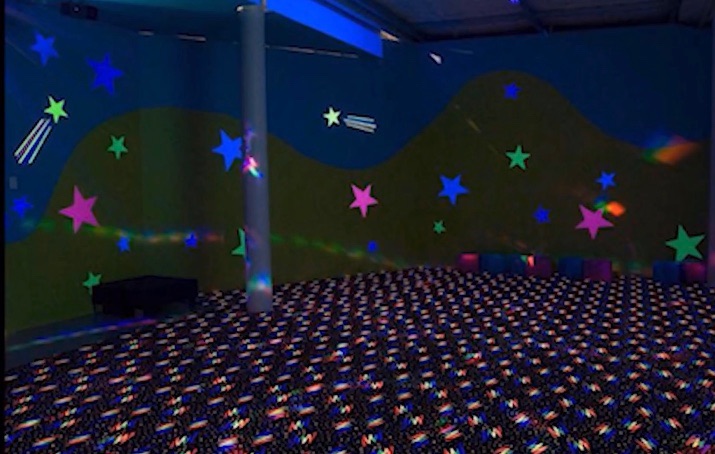
Finally, near the end of summer break, mom came to pick me up early one day, so I was still in the arcade instead of waiting for her out front. It was a shock to see mom walk in to the back room unexpectedly, and it felt like a big intrusion into my privacy. She was trying to tell me something, but I couldn’t hear what she was saying over the sound of Polybius. My Polybius friends that were there with me told me to ignore her and keep playing Polybius, so I did. After a minute or two, Mom started crying out of nowhere and then physically dragged me away from the machine and drove me to a doctor’s office.
I don’t remember everything that happened there, but mom was holding my hand tightly for most of it. Mom told the doctor that I was “addicted to Donkey Kong” and that she saw me go completely unresponsive in front of the machine, which wasn’t even turned on. A big lie, but I think that was her way to try to get the doctor on her side so she didn’t have to keep driving me to the arcade.
A nurse ushered me into a big MRI machine, at least that’s what I believe it was in retrospect. I wasn’t paying attention to my surroundings much. I was imagining the Polybius light show to calm myself down, because the hospital was busy and overwhelming.
My discharge papers showed a diagnosis of “video induced seizure with psychosis”, which is complete bullshit because I didn’t have a seizure and never have, I didn’t lose consciousness, I don’t have epilepsy or anything, and I’ve never had whatever psychosis is.
Mom did end up banning me from the arcade. She took away my old Super Nintendo and Gameboy that I didn’t even play anymore, and even made me delete all the rudimentary games on my graphing calculator that I had gotten from my friends at school.
A few months later and school was back in session, and as I got back into the groove of classwork, the memories of Polybius started to fade. When I asked mom to go to the arcade, she would always change the topic or gate it behind something impossible, like getting all A+’s. Or she would say that I could go to the arcade if I had perfect attendance for the whole year, when both of us knew that I had already missed a day.

One Friday I planned to go to a friend’s house for a sleepover after school, so my friend’s dad picked us up after class. I begged him to go to the arcade before going to their house, and he said yes. I beelined it for the back room but the wall had been painted over again, back to the exact same shade of plain gray that it once was. The original arcade cabinets were back, and they had been switched around so that Donkey Kong was now in the space next to Marble Madness, where Polybius used to be. My new friends were not there anymore, so I played a few of the other classic games. I was really bad at all of them except for Donkey Kong, which I seemed to have a natural gift for in a way that I didn’t before. It reminded me of Polybius in some way.
My prowess with the Donkey Kong cabinet kicked off another adventure about me sneaking in time to play Donkey Kong behind mom’s back, which ended up in me playing Donkey Kong competitively. But that’s a story for another time.
Special Effects Arcade ended up closing in 2004, then high school and college took too much time away from my Donkey Kong hobby, and I haven’t thought about a lot of this since. But as you can imagine, seeing Polybius scroll by in my YouTube feed reignited the nostalgia and prompted me to write this post describing my experience with it. If you want to see the video about Polybius that prompted me to write this, you can click through and watch it here.
In researching this article, I was able to get in contact with the owner of Special Effects through his Facebook page, we chatted for a bit over Messenger and really seemed to be hitting it off. But as soon as I mentioned how I used to play Polybius in the back room there, he immediately blocked me.
If you have any more information about Polybius, or especially if you remember playing the Polybius machine in Scotts Valley, please get in touch with me through the comment section below.
Unfortunately I don’t remember the names of the kids I made friends with, who would always be there at the arcade with me watching me play Polybius. Can’t remember their faces, either. Or their voices, come to think of it.
I still occasionally dream of the Polybius light show. Man I would kill to see that light show again.
I hope you enjoyed this work of fiction inspired by the Polybius urban legend. As an amateur fiction writer, I’m looking to improve and open to critique, so please share your thoughts about the story and its construction in the comments section!
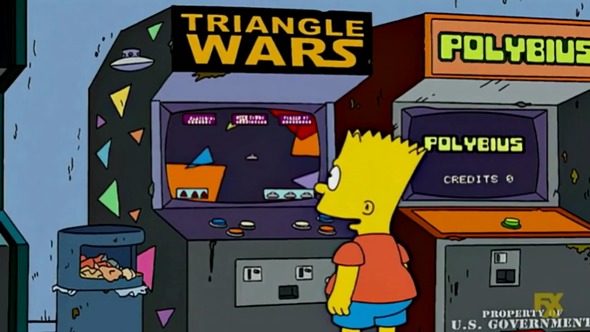
Image Credits:
Special Effects Arcade Storefront by “Smellz”
Chairs in room render by entityNULL on Reddit
Arcade pattern background by Neonpixii